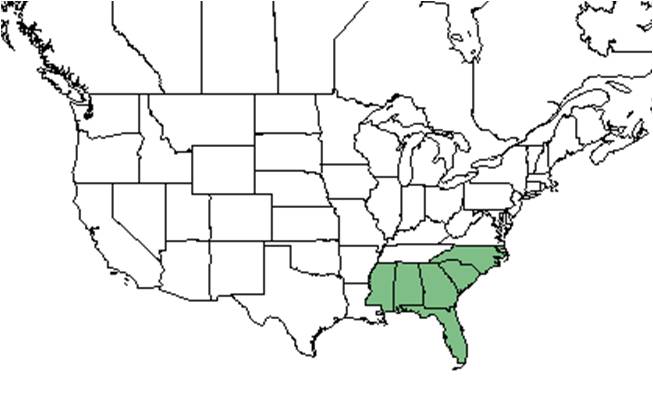Difference between revisions of "Lechea sessiliflora"
KatieMccoy (talk | contribs) (→Seed dispersal) |
KatieMccoy (talk | contribs) (→Seed bank and germination) |
||
| Line 38: | Line 38: | ||
===Seed bank and germination=== | ===Seed bank and germination=== | ||
| + | Kirkman et al. (2004) found that the vulnerability ratio to soil disturbance is 3/3(reference sites/recovery sites). | ||
| + | |||
===Fire ecology=== <!--Fire tolerance, fire dependence, adaptive fire responses--> | ===Fire ecology=== <!--Fire tolerance, fire dependence, adaptive fire responses--> | ||
===Pollination=== | ===Pollination=== | ||
Revision as of 14:27, 12 January 2016
| Lechea sessiliflora | |
|---|---|
Error creating thumbnail: Unable to save thumbnail to destination
| |
| Scientific classification | |
| Kingdom: | Plantae |
| Division: | Magnoliophyta - Flowering plants |
| Class: | Magnoliopsida - Dicotyledons |
| Order: | Fabales |
| Family: | Cistaceae |
| Genus: | Lechea |
| Species: | L. sessiliflora |
| Binomial name | |
| Lechea sessiliflora Raf. | |

| |
| Natural range of Lechea sessiliflora from USDA NRCS Plants Database. | |
Common name: pineland pinweed
Contents
Taxonomic notes
Lechea species can be hard to distinguish from each other due to microscopic differences, this often leads to problems with correct nomenclature (Barringer 2004).
Description
L. sessiliflora is a herbaceous perennial distinguished from other Lechea species by having a conspicuously exserted, ellipsoid capsule that is capped by a reddish-brown fimbriate stigma [1]. The species in Lechea have a distinctive calyx with the two outer sepals very different in size and shape from the three inner sepals (Barringer 2004). It is often mistaken for L. deckertii because both species have prominently exserted straw-colored capsules with persistent stigmas. The easiest way to distinguish these two species is by the length of the outer slender sepals and the shape of the capsules. L. sessiliflora has ellipsoid capsules and the narrow outer sepals are almost equaling or a little longer than the broad inner sepals[1].
Distribution
Ecology
Habitat
Habitats include longleaf pine-wiregrass communities, pine-scrub oak barrens, coastal scrubs, and dry pine flatwoods. It has been found in disturbed areas such as cutover pine communities, sandy roadsides, former live oak plantations and along railroad tracks. Associated species include Dalea, Eupatorium, Liatris, Pityopsis, Symphotrichum, and Schizachyrium. Soil types include loamy sand and sand (FSU Herbarium).
Phenology
L. sessiliflora has been observed flowering August through October and fruiting in October (FSU Herbarium).
Seed dispersal
Seeds are dispersed by gravity (Kirkman et al. 2004).
Seed bank and germination
Kirkman et al. (2004) found that the vulnerability ratio to soil disturbance is 3/3(reference sites/recovery sites).
Fire ecology
Pollination
The following Hymenoptera families and species were observed visiting flowers of Lechea sessiliflora at Archbold Biological Station (Deyrup 2015):
Halictidae: Lasioglossum placidensis
Use by animals
Diseases and parasites
Conservation and Management
Cultivation and restoration
Photo Gallery
References and notes
Deyrup, M.A. and N.D. 2015. Database of observations of Hymenoptera visitations to flowers of plants on Archbold Biological Station, Florida, USA.
Florida State University Robert K. Godfrey Herbarium database. URL: http://herbarium.bio.fsu.edu. Last accessed: October 2015. Collectors: C. Anderson, M. Davis, Robert K. Godfrey, R. Komarek, H. Roth. States and Counties: Florida: Calhoun, Franklin, Gadsden, Gulf, Jackson, Leon, Suwannee, Taylor, Wakulla, Walton. Georgia: Grady. Compiled by Tall Timbers Research Station and Land Conservancy.